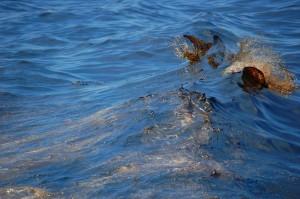A year ago, the Deepwater Horizon drilling rig sank, starting an oil spill that became the worst man-made environmental disaster our nation has ever seen. Since then, NOAA has been hard at work with a team of state and federal partners assessing the damage to the Gulf of Mexico as part of the Natural Resource Damage Assessment (NRDA) process.
In that time, we have:
- collected nearly 30,000 samples of water, sediment, and tissue affected by the spill,
- validated more than 18,000 analyses of those samples,
- surveyed thousands of miles of shoreline for oil,
- posted more than 60 work plans and other data on this site,
- produced videos educating the public about the NRDA process,
- held public meetings to educate the public about NRDA, and
- asked for public comments on restoration options at public meetings and online.
Recently, the federal and state partners have reached an agreement with BP on four emergency restoration projects, including an effort to restore submerged aquatic vegetation that was damaged by response vessels and activities. "With the spring growing season beginning, we're now going to have the chance to observe if natural recovery is occurring in the marshes that were impacted by oil," said John Iliff, a supervisor for the NOAA Damage Assessment, Remediation, and Restoration Program. "We'll also be getting more boots back out in the mud and eyes on the water to continue our ongoing assessment work."
In the coming months and years, we will continue collecting data on the short- and long-term impacts from the spill. Restoration planning is under way, and public input is an important part of that process. We are soliciting public feedback on restoration options for the Gulf until May 18. This input will be considered in a draft Programmatic Environmental Impact Statement, which will be the focus of our next public comment period, currently targeted for early 2012. To learn more about NOAA's response to the spill and keep up to date on the latest news, sign up to receive e-mail updates.


